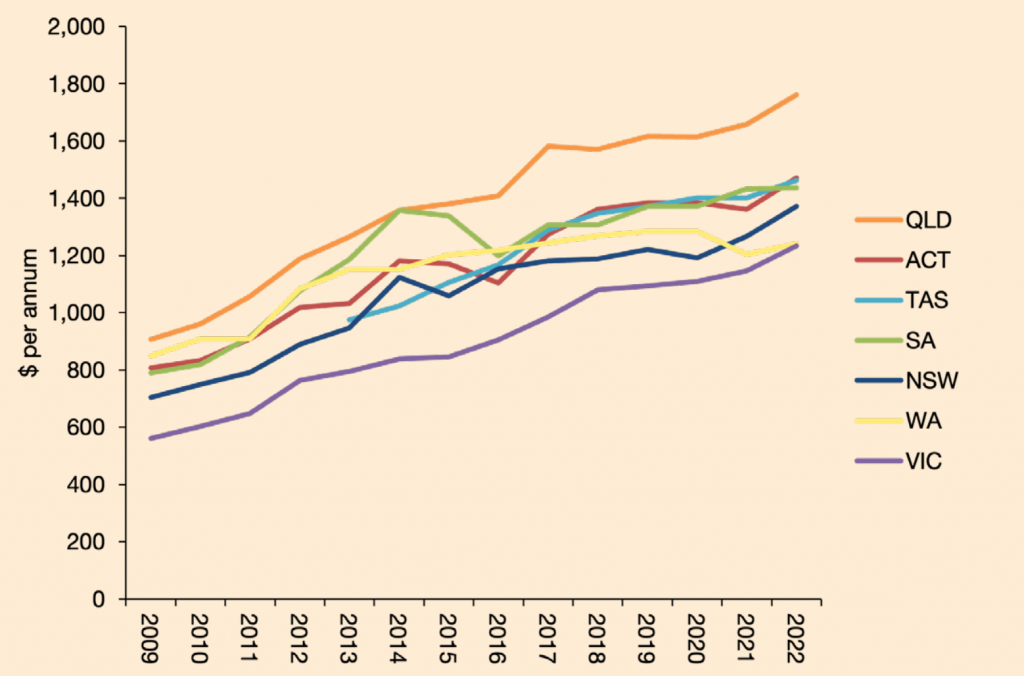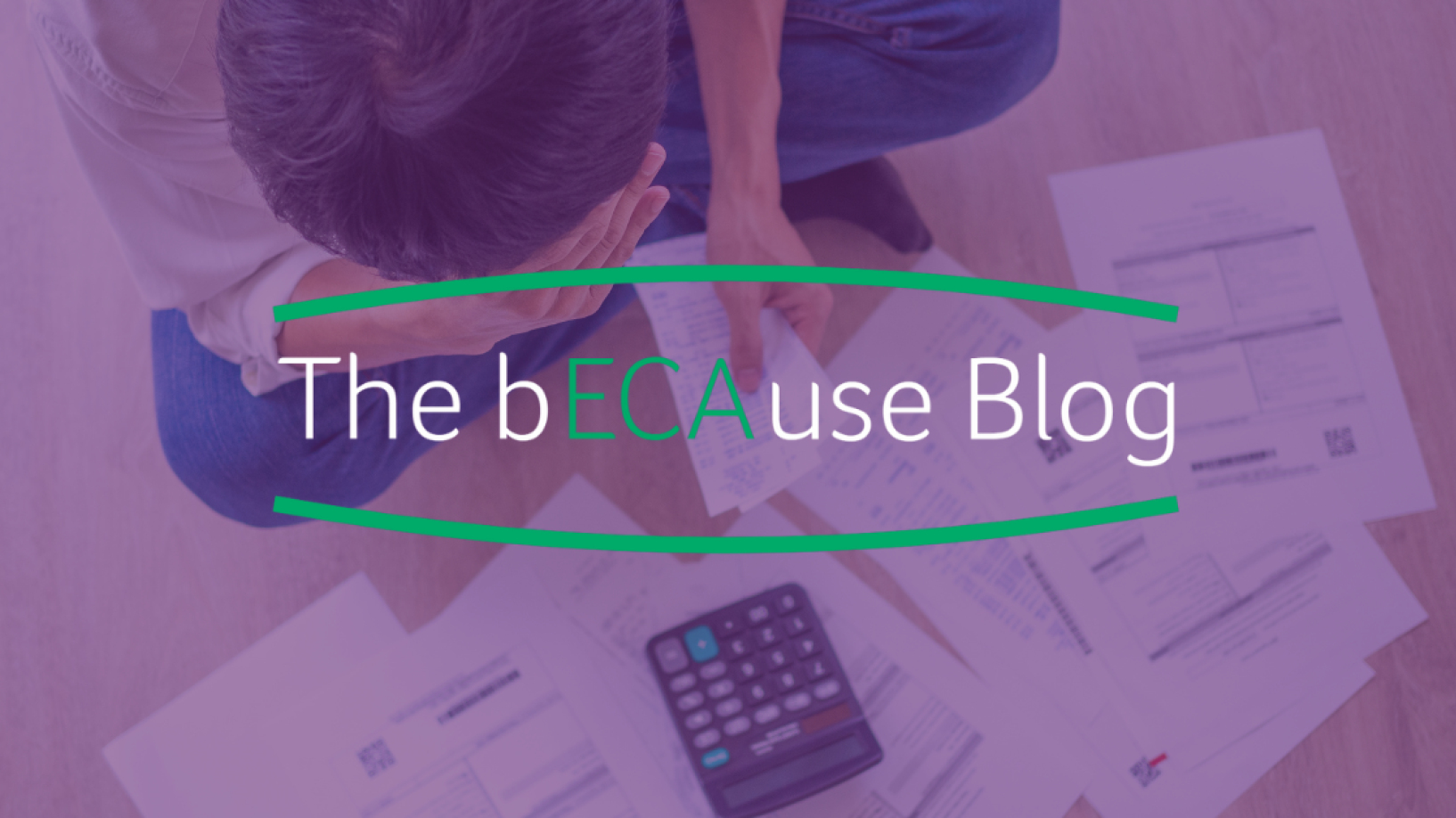For most Australians, how our energy prices are determined can feel like something that belongs in the realm of the dark arts. Prices go up and prices go down (but let’s be honest, mostly up). And there seems to be a whole set of invisible forces at play in the background.
With predictions in the most recent Federal Budget that electricity prices will rise 20% by late 2022 and another 30% in 2023-24, these types of numbers can seem quite scary for households who are already on tight budgets. That’s why any work that helps demystify the ins and outs of energy prices is worth paying attention to.
For over a decade, The St Vincent de Paul Society has been tracking changes to domestic energy bills and reporting how this impacts households and energy affordability more broadly. This research is funded through Energy Consumers Australia’s Grants Program. Tracking the results year-on-year helps us to see trends over time, helping to ensure transparency of what can be a pretty murky area, and encourage a competitive retail market.
The latest national results, summarising their state-by-state analysis, are now in and give us a great snapshot of how energy bills have changed from when tracking began in July 2009 up to July 2022.
The prices in this report only refer to residential energy bills. ECA conducts a bi-annual Small and Medium Enterprise Tariff Tracker to understand bills for those consumers. The next SME tracker will be released in December 2022.

Changes to electricity prices in Australia July 2009 to July 2022 as estimated annual bills (nominal inc GST) for electricity regulated/standing offers; 6,000kWh per annum, single rate.
However, what may not be evident to the average person is that there is a notable difference between the lowest and highest annual electricity bills across states and territories – and this gap has significantly increased over the past decade. For households consuming 6,000kWh per annum (single rate), there is a $700 bill difference between South Australia (the highest jurisdiction) and Victoria (the lowest) in 2022.
In 2009, the gap between the highest and lowest (South Australia and ACT) was just $350. This means that if you ask your friends and family what their bill looks like, there’s a high chance it will look different to yours.
This story is even more pronounced when it comes to gas. Gas prices have increased in every jurisdiction over the past year, with the highest increases felt in NSW and the ACT. However, despite volatility in the international gas market, these increases haven’t been hugely pronounced at home as most retailers have long term price firming contracts.
This means we can expect price increases in months to come as these contracts expire, unless gas prices come down in the interim.
 Changes to gas prices in Australia July 2009 to July 2022 as estimated annual bills (nominal, inc GST) for gas regulated/standing offers, 30,000Mj per annum.
Changes to gas prices in Australia July 2009 to July 2022 as estimated annual bills (nominal, inc GST) for gas regulated/standing offers, 30,000Mj per annum.
We can see that bills aren’t moving up and down equally across the country. This is made more complex as not everyone has yet experienced a hike in their bills, despite the recent market volatility, due to the presence of legacy contracts. We will continue to see changes in contracts continue to wash through in the coming months, meaning that we will continue to see movement in what consumers are paying.
What’s behind the price hikes?
From a bird’s eye-view, take your pick from a smorgasbord of factors as to what is driving up energy bills– from high international coal and gas prices due to the war in Ukraine, to generator outages, to record volumes of rain and inclement weather flooding coal pits and increasing demand, to transmission constraints. We’ve reached something of a perfect storm.
It’s also important to understand how electricity bills are structured in Australia and what factors influence price changes at a more granular level.
Our electricity bills are made up of four components: network charges, retail charges, environmental charges, and wholesale usage. The Tariff Tracker found that there has been movement in each of these areas across all jurisdictions. However, the movement has not been equally spread. We have seen the most volatility and biggest jump in price for wholesale usage, while the other three areas have remained relatively steady, on average.
In the second quarter of 2022, wholesale electricity and gas prices skyrocketed to unprecedented levels. Generators were temporarily withdrawing from the market, causing concern that there wouldn’t be enough supply to meet demand, prompting market intervention. Due to the unprecedented nature of events, retailers scrambled to respond and in turn were impacted in a variety of ways.
Over this period, we saw some retailers struggling to compete and some retailers failing (e.g. Enova, Power Club, Mojo Power and Social Energy). Other retailers ceased offering market offers or accepting new customers, while others actively encouraged their customers to find a new retailer.
Overall, we saw a significant decline in the number of retailers, although some retailers bounced back in August (see chart below). For example, in South East Queensland there were 35 retailers with offers in April 2022, this plummeted to 12 in July, and slightly increased to 14 in August.
 Number of electricity retailers with published market offers from April to August 2022.
Number of electricity retailers with published market offers from April to August 2022.
A key role of retailers is to manage the risk of price volatility in the wholesale market on behalf of their customers. However, not all retailers prioritised the best interest of consumers during this period. Some retailers announced significant price increases (for example one retailer increased prices by 400%), or asked customers to leave, did not clearly explain that customers could still access the regulated standing offers – something all customers are entitled to.
Consumers need to have confidence and trust that the system is working in their interest to keep them engaged, but this type of behaviour has caused confidence to plummet. You can read more about this collapse in consumer confidence here.
What can consumers do about higher bills?
1. Shop around to make sure you’re on the best deal
One of the key findings to come out of this research is that as of July 2022, the single best value offer in each network area is a market offer and not a standing offer. As of July 2022, the difference in annual bill for the “big three” (Origin Energy, AGL and Energy Australia) retailers’ offers is approximately $125 in Victoria, $160 in South East Queensland, $180 in NSW, and $200 in South Australia.
The tracker shows, however, that due to the volatility in the market, many recent market offer products have been more expensive than the standing offers. For example, in NSW, households on the worst market offer would be better off by $2,555 per year on the default market offer. While in most scenarios the difference is not so pronounced, the principle still rings true, consumers would have been better off to swap to the standing offer.
However, a lack of awareness of the existence of standing offers, or understanding about what they entail, means that many customers are not taking up this alternative.
In many states, the best market offer is often not from the “big three” retailers. For example, in Ausgrid’s area in NSW, the best market offer has an annual bill that is $170 cheaper than the ‘best’ offer by any of the big three. It therefore pays to shop around and make sure that you are on the best deal available.
It’s also important that consumers understand what type of tariff structure they are on. Is it a single rate tariff where they are always charged the same amount? A block rate tariff where they are charged different rates depending on usage? Or a time-of-use tariff based on the time of day?
Survey results from ECA’s recent Energy Consumer Behaviour Survey revealed that 36% of respondents were unsure of what type of tariff they were on.
2. Seek out the protections you’re entitled to
If you’re facing bill stress, it’s important to remember that there are many options for people who are struggling to afford their bills. No matter where you are, you are entitled to protections and support. You could:
- Speak to your retailer about what support they can provide to you. Different options include payment plans, energy conservation, debt deferrals, and hardship programs.
- Many Australians are eligible for energy rebates and concessions. Contact your energy retailer or relevant government body for up-to-date information on how to apply.
- If you have a problem with your retailer, remember that you can call your Ombudsman for assistance.
3. Think about some easy ways to reduce your energy use
Energy prices may be going up, but the size of your bill doesn’t always have to. ECA has put together some cost-friendly ways you can take action around your home to lower your energy use while staying comfortable.

